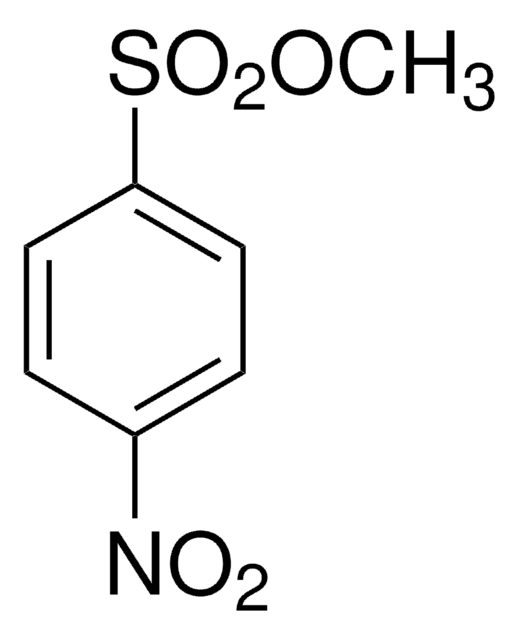653152
4-Mercaptophenylacetic acid
97%
Synonym(s):
(4-Carboxymethyl)thiophenol, (4-Sulfanylphenyl)acetic acid, 2-(4-Mercaptophenyl)acetic acid, 2-(4-Sulfanylphenyl)acetic acid, 4-Mercaptobenzeneacetic acid, p-Mercaptophenylacetic acid
About This Item
Recommended Products
assay
97%
form
solid
mp
105-109 °C (lit.)
storage temp.
2-8°C
SMILES string
OC(=O)Cc1ccc(S)cc1
InChI
1S/C8H8O2S/c9-8(10)5-6-1-3-7(11)4-2-6/h1-4,11H,5H2,(H,9,10)
InChI key
ORXSLDYRYTVAPC-UHFFFAOYSA-N
Related Categories
General description
Application
It can be used:
- On-resin preparation of peptide-α thiophenylesters which are used in a chemical ligation process for the chemical synthesis of peptides.
- In one pot deprotection of (acetamido-methyl)cysteine following native chemical ligation and/or desulfurization method for the preparation of peptides.
- Palladium facilitated deprotection of N-terminal cysteine through native chemical ligation method for the preparation of synthetically challenging proteins.
signalword
Danger
hcodes
Hazard Classifications
Eye Dam. 1 - Skin Irrit. 2 - STOT SE 3
target_organs
Respiratory system
Storage Class
11 - Combustible Solids
wgk_germany
WGK 3
flash_point_f
Not applicable
flash_point_c
Not applicable
ppe
dust mask type N95 (US), Eyeshields, Gloves
Certificates of Analysis (COA)
Search for Certificates of Analysis (COA) by entering the products Lot/Batch Number. Lot and Batch Numbers can be found on a product’s label following the words ‘Lot’ or ‘Batch’.
Already Own This Product?
Find documentation for the products that you have recently purchased in the Document Library.
Customers Also Viewed
Our team of scientists has experience in all areas of research including Life Science, Material Science, Chemical Synthesis, Chromatography, Analytical and many others.
Contact Technical Service




![(Ir[dF(CF3)ppy]2(dtbpy))PF6](/deepweb/assets/sigmaaldrich/product/structures/982/913/02dd8ddd-6deb-40a0-ab9b-07b18f1abb09/640/02dd8ddd-6deb-40a0-ab9b-07b18f1abb09.png)








